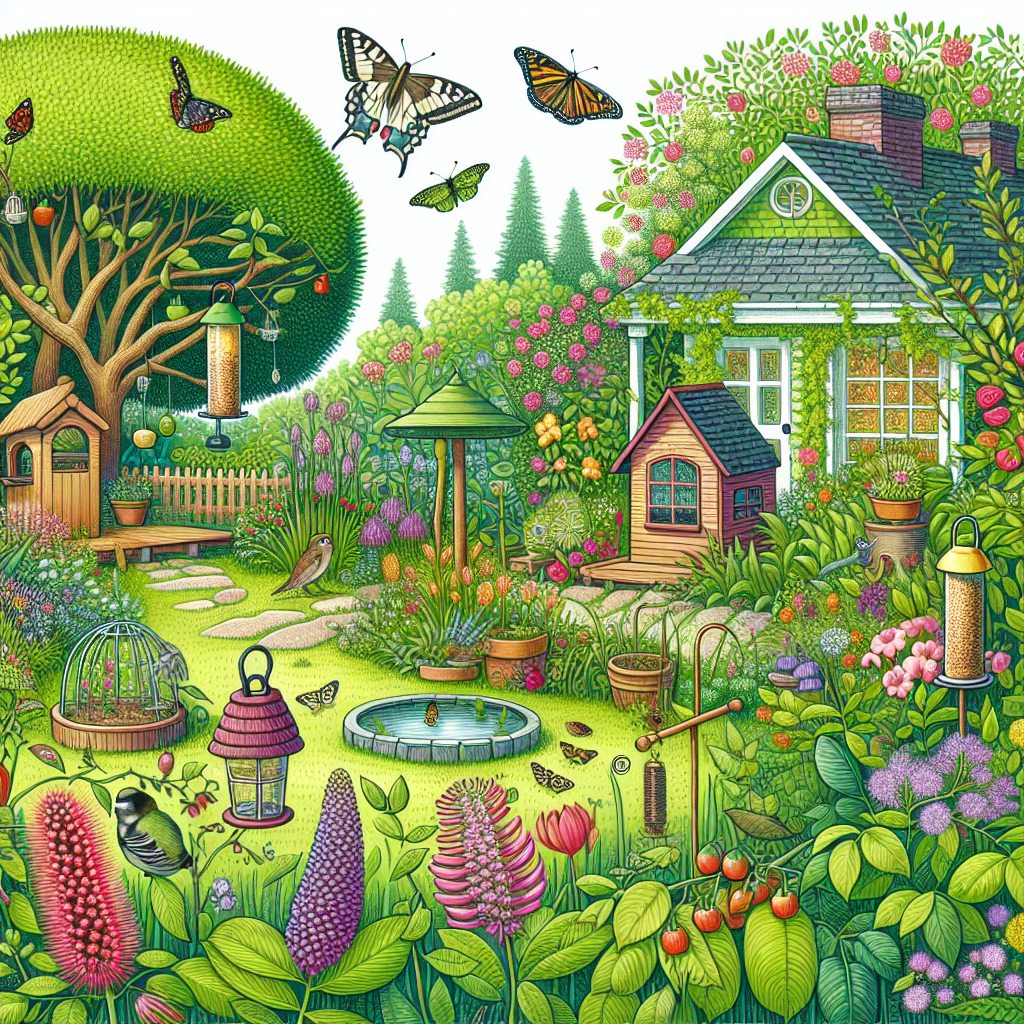In an era where urban development and environmental concerns collide, many of us are looking for ways to bring wildlife back into our backyards. Landscaping for wildlife not only benefits the ecosystem but also enriches our lives by connecting us with nature. In this article, we’ll explore how you can create a welcoming habitat at home, turning your outdoor space into a sanctuary for birds, butterflies, and other creatures.
Why Landscape for Wildlife?
Landscaping for wildlife is much more than just aesthetics; it’s about fostering biodiversity. Wildlife habitats created in our gardens provide food, shelter, and breeding grounds for various species. This practice helps combat habitat loss, ensures pollination for plants, and can even control pests naturally!
Understanding Local Wildlife Needs
Before diving into your landscaping project, take a moment to observe the types of wildlife that frequent your area. Are there specific birds, butterflies, or small mammals that you would like to attract? Understanding their needs can inform your landscaping choices. For example, some birds prefer dense shrubs for nesting, while butterflies need nectar-rich flowers.
Native Plants: The Foundation of a Wildlife Habitat
Embrace Local Flora
One of the most effective ways to attract wildlife is to use native plants in your landscaping. Native plants are adapted to local climate and soil conditions, requiring less water and maintenance than exotic species. They provide food and shelter tailored to the local wildlife that relies on them.
- Birds: Planting berry-producing shrubs like elderberry or serviceberry can attract various bird species, providing them with essential nutrients.
- Butterflies: Include nectar plants such as milkweed and coneflower to invite butterflies to your garden.
Diverse Plant Selection
Aim for a variety of plants that bloom at different times of the year to ensure a steady food source. A mix of perennials, annuals, shrubs, and trees can create layers within your garden, offering diverse habitats for various animals.
Creating Shelter: The Importance of Structure
Natural Cover and Nesting Spaces
Wildlife needs shelter from predators and harsh weather. Consider the placement of trees, shrubs, and ground covers in your landscaping. Dense thickets can serve as excellent hiding spots for small mammals, while birdhouses or bat houses can provide safe nesting sites.
Water Features as Wildlife Attractions
Adding a water feature, such as a small pond or birdbath, creates an irresistible focal point for wildlife. Not only does it provide hydration and bathing spots for birds, but it can also attract amphibians and beneficial insects. Ensure that your water feature is shallow, easily accessible, and contains native aquatic plants to enhance the ecosystem.
Sustainable Practices for a Thriving Habitat
Use Organic Gardening Techniques
Minimizing pesticide and herbicide use is crucial for maintaining a healthy wildlife habitat. Instead of chemicals, explore organic gardening methods, such as companion planting or introducing beneficial insects like ladybugs, which can help manage pests naturally.
Composting and Mulching
Using organic mulch and compost not only enriches the soil but also supports earthworms and beneficial microbes. These organisms improve soil health, benefiting your plants and the wildlife that visits your garden.
Engaging with the Community
Share Your Success Story
Creating a wildlife-friendly landscape can inspire your neighbors to do the same. Share tips and your experiences through community groups, social media, or local gardening clubs. Many areas offer programs or certifications for wildlife-friendly gardens—consider participating to raise awareness.
Organize Local Events
Think about hosting a garden tour or a workshop on wildlife gardening. Engaging the community fosters a collective sense of responsibility for local wildlife and promotes environmental sustainability.
Conclusion: A Personal Journey into Nature
Transforming your yard into a wildlife habitat can be one of the most rewarding experiences you undertake. Not only do you contribute to the local ecosystem, but you’ll also foster a deeper connection with nature. Watching birds flutter and butterflies dance in your garden can bring joy and tranquility to your daily life.
As you embark on your landscaping adventure, remember to be patient—nature takes its time. With careful planning and a little creativity, you can create a vibrant, bustling habitat that supports both wildlife and your well-being. So, roll up your sleeves, dig in, and let your garden become a sanctuary for the creatures that call it home!


